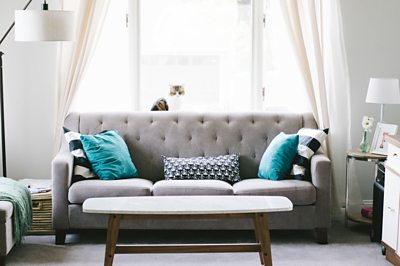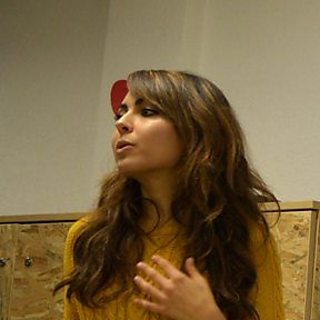We are researching the impact of a hyper-personalised and multi-sensory living room of the future. Creating an immersive experience that uses data to personalise media to people delivered through mulitple devices, we are interested in understanding the impact of using this data within a group context.
Project from 2018 - present

What are we aiming to understand?
We are researching how people engage with an immersive and personalised living room of the future, where a range of Internet of Things (IoT) devices respond to people in a bi-directional manner on both a personal and group level. We specifically want to understand the impact of contextual cues provided by IoT and how future immersive environments can stimulate a range of human senses rather than being dominated by one particular sense. IoTs that involve more than the standard audio and visual, such as touch and smell, enable us to create a hyper-personalised and multi-sensory immersive environment.
As the future living room scenario uses personal data, we are researching the perceptions, implications and behaviours exhibitied when an individual's data is used in the shared space.
What will the Living Room of the Future be?
Imagine a situation where a person or group of people enter an immersive living room where their personal data is used to adapt the media played out through IoT devices. The narrative is the same for everybody, but the media shapes to them collectively within the context of the people around them (or absence of people). We envisage that changing parts of the narrative at the edges of the story or experience will create a more emotionally engaging and contextually relevant experience. The same thing happens in real life when a person adapts the peripheral parts of a story, such as:
- Location and group
- Language (expressions, sayings or habits)
- References, landmarks and local places
- and so on…
This ensures the story resonates with the audience. In our living room scenario however, this is achieved through the use of media and IoT devices within the living room.
Instead of distributing data to remote cloud servers, personal data processing takes place within – which collates, curates, and mediates access to a person’s data by verified and audited third party services. This ensures that data cannot be accessed by anyone else, nor does it leave the living room. Databox enables us to use people's data in a trusted manner as it creates a trusted bi-directional relationship between people and IoT devices in the living room. This results in subtle adaptations and personalisation without the need for input, however, people are equally able to control the personalisation of the media that is played out through the devices. This approach preserves the privacy of personal data whilst it is used to adapt an experience for broadcast media, ensuring the experience is ethical.
Whilst this might sound somewhat conceptual, in order to demonstrate a scenario of how this could potentially work in the future we are currently designing and developing the living room of the future as part of an exhibition and experience that the public can see, touch and feel. We hope to immerse people in ways we imagine will exist in the future.
How have we got here?
We are building on our earlier work on a number of projects, mostly prominently which demonstrates early signs of what could be possible with IoT storytelling. The goal for the story when played out in the living room remains the same as it is/was in Perceptive Media - one story arc but with varying ambient parts of the narrative. The content becomes a set of media objects that can be connected together to form different experiences.
A lot of technical work has been done through . The OBM approach assembles the media as a collection of objects which enables multiple versions of the same content to be personalised to people in a range of ways based on factors such as location, time or preference. It moves away from traditional linear media and enables us to create a storyline that can subtly adapt to people in our living room.
The Databox system is used within the living room to collect, curate and mediate personal data, and we successfully won an Objects of Immersion bid with Lancaster University to extend the project and capabilities.
Extending our Human Data Interaction (HDI) research on ethics and personal data, we are exploring the impact of the living room on peoples’ attitudes, perceptions and behaviour. Our HDI research explores key areas of trust, privacy and transparency of personal data and we are especially interested in designing methods and/or designs that offer explicit awareness and transparency to people in systems that use their data.
Previous events
- , 8 Feb- 9 Feb 2019
- , June 2019
Starting to accumulate bits and build components for Living Room of the Future @DataboxProject @ImaginationLanc @FACTLiverpool @HorizonCDT @91�ȱ�RD
— Objects of Immersion (@ImmersiveObject) March 8, 2018
- -

